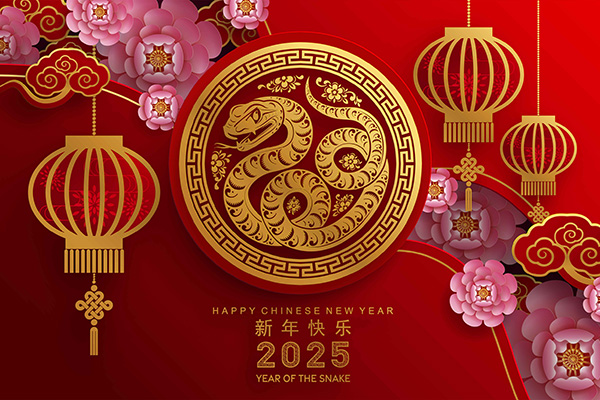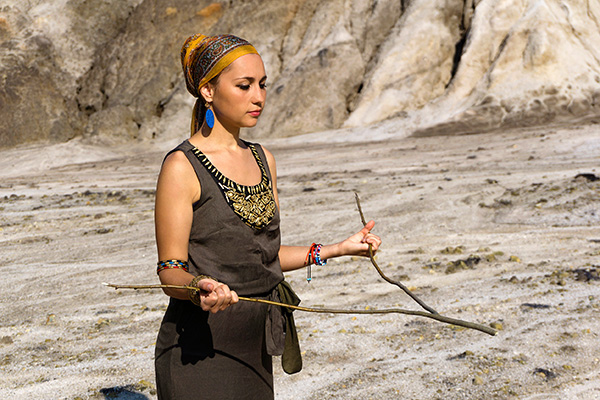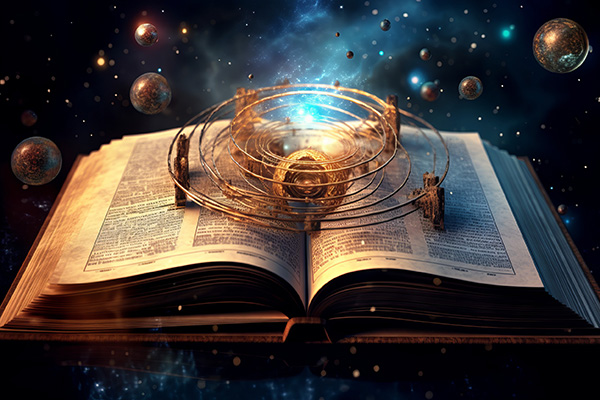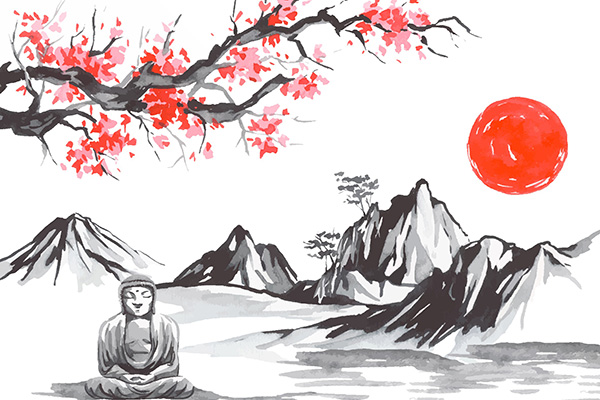ancient china
The Mystical Year Of The Yin Wood Snake
 As we settle into 2025, the energy of the Yin Wood Snake begins to take shape, revealing its unique rhythm and influence.
As we settle into 2025, the energy of the Yin Wood Snake begins to take shape, revealing its unique rhythm and influence.
While the excitement of the Chinese Lunar New Year celebrations may have faded, the true essence of the year is beginning to unfold.
Now is the perfect time to align with the energies of the Wood Snake, harness its mystical power, and set a clear, intentional path for the months ahead.
The Year of the Wood Snake brings a harmonious fusion of intuition, mystery and steady growth.
The Snake, known for its wisdom and transformation, merges with the nurturing and grounding essence of the Wood element this year, fostering patience, adaptability, and a deep connection to our spiritual and emotional roots.
Unlike the impulsive Fire Snake or the analytical Metal Snake, the Wood Snake encourages thoughtful progress and long-term vision, making 2025 an ideal year for meaningful evolution.
In many cultures, the Snake symbolizes rebirth, wisdom and mystery. Its ability to shed its skin represents the release of outdated beliefs, limitations, and habits, clearing the way for renewal. This year invites you to embrace transformation, trust your intuition, and align with the subtle yet powerful energy of the Snake as you enter a year of profound personal and spiritual growth.
Astrology Forecast January 27 – February 2, 2025
 The week begins with Mercury entering innovative Aquarius, sparking fresh ideas and out-of-the-box thinking. Communication takes a forward-thinking turn, making this a prime time for brainstorming, problem solving, and embracing new perspectives in both work and business.
The week begins with Mercury entering innovative Aquarius, sparking fresh ideas and out-of-the-box thinking. Communication takes a forward-thinking turn, making this a prime time for brainstorming, problem solving, and embracing new perspectives in both work and business.
Over the next two weeks, a strong pull to connect with like-minded individuals will encourage you to explore intellectual pursuits that challenge traditional norms. Let your curiosity lead you into uncharted mental territory where unique insights and creative solutions await.
Conversations are likely to be lively, witty, and full of originality. But beware of jumping to conclusions or appearing aloof – a balance of logic and diplomacy will smooth both professional and social interactions.
Wednesday marks the Chinese New Year, ushering in the Year of the Snake, an ancient symbol of intelligence, intuition, and charm.
The Year of the Snake repeats itself every 12 years, and people born under this sign are known for their wisdom, resourcefulness, and quiet determination.
The element associated with each Snake year adds nuance to its influence. In 2025, the Wood Snake brings a dynamic blend of growth, creativity and flexibility, enhancing the traditional Snake traits of patience, insight and strategy.
The energy of the Snake makes 2025 a year in which success comes to those who move with calm deliberation rather than haste. Trust your instincts, follow your inner voice, and make thoughtful decisions, especially when it comes to finances, relationships, and career paths.
Abundance Rituals For A Prosperous 2025
 The universal energy of renewal and infinite possibility beckons as we enter the year 2025. The beginning of a new year is a great time to release old energies that no longer serve us and to invite a new wave of abundance, prosperity and fulfillment into our lives.
The universal energy of renewal and infinite possibility beckons as we enter the year 2025. The beginning of a new year is a great time to release old energies that no longer serve us and to invite a new wave of abundance, prosperity and fulfillment into our lives.
New Year’s manifestation practices not only clarify and align our intentions from the start, but also release energetic blockages, allowing prosperity and well-being to flourish. Releasing the old creates space for new possibilities and opportunities to flow into our lives.
The modern idea of setting intentions or “New Year’s resolutions” has its roots in various traditions. For centuries, cultures around the world have marked the transition to a new year with spiritual, esoteric, and religious practices and ceremonies.
In Mesopotamia, for example, the Akitu festival celebrated the Spring Equinox as the beginning of a new year and included rituals to honor the gods and ensure a bountiful harvest.
In Babylonia, at the beginning of each year, people made promises to their deities to return borrowed items and pay their debts. These promises were a way to start the year fresh and in good standing with the higher realms.
The ancient Romans perpetuated the tradition by dedicating the month of January to Janus, the two-faced god who looked both backward and forward to symbolize “looking back” on the past year and “looking forward” to the New Year, making it a time for personal reflection and new beginnings.
The Magic Of Dowsing Stands The Test Of Time
 Dowsing, also known as “divining” or “water witching,” is an ancient practice that uses a tool such as a pendulum or divining rod to locate what is hidden, most commonly underground water, minerals, or lost items. it is also a divination method used to tap into the unseen or mystical to gain spiritual, psychic, or energetic insights.
Dowsing, also known as “divining” or “water witching,” is an ancient practice that uses a tool such as a pendulum or divining rod to locate what is hidden, most commonly underground water, minerals, or lost items. it is also a divination method used to tap into the unseen or mystical to gain spiritual, psychic, or energetic insights.
While skeptics dismiss it as pseudoscience, dowsing has persisted in many cultures for thousands of years, standing the test of time as a mysterious blend of mysticism and physics. I believe its continued presence throughout history speaks to its importance and continued relevance in today’s technological society.
Dowsing has ancient roots dating back thousands of years, although its exact historical beginnings remain uncertain. Archaeological evidence suggests that the practice dates back to ancient Egypt and China, where early civilizations used rudimentary dowsing techniques to locate water and minerals. Cave paintings in North Africa from around 8000 B.C. depict people holding forked sticks, which many experts believe may be dowsing rods.
The ancient Greeks and Romans were also familiar with dowsing, especially for locating underground water sources. They considered the dowsing rod or pendulum a sacred tool capable of tapping into hidden energies. It was believed that certain materials, especially wood or metal, could act as conduits for detecting invisible forces in the earth.
In the Middle Ages, dowsing became more widely practiced in Europe, often by miners searching for metal veins, especially during the mining booms in Germany and England. However, due to its inexplicable, mystical nature, dowsing also increasingly became associated with the occult and witchcraft, leading to its condemnation by the church.
From Ancient Mystics To Modern Psychics
 Psychics and mediums have been around since the dawn of human civilization: from the shamans in indigenous cultures, to the oracles of ancient Greece and Rome, the seers and druids of Celtic societies, the sages of ancient China, and the prophets of ancient Middle Eastern cultures.
Psychics and mediums have been around since the dawn of human civilization: from the shamans in indigenous cultures, to the oracles of ancient Greece and Rome, the seers and druids of Celtic societies, the sages of ancient China, and the prophets of ancient Middle Eastern cultures.
Some famous examples include Pythia, the Oracle of Delphi in ancient Greece; the Celtic soothsayer Myrddin Wyllt, also known as Merlin in later Arthurian legends; the Chinese wu (shaman) Jing Fang; Black Elk, the renowned Native American holy man of the Oglala Lakota Sioux people; Isaiah, the renowned prophet of the ancient Near East; and Agastya, the revered Hindu sage and seer.
Throughout human history, in different cultures and societies, there have always been individuals with mystical abilities who held important roles within their communities and served as intermediaries between the physical world and spiritual realms.
They served as conduits of divine wisdom, predicting future events, providing insight into hidden truths, and offering guidance on various matters. They often acted as special advisors to tribal leaders, rulers, and kings, and typically played an important role in the moral and spiritual direction of their people.
The term “psychic” comes from the Greek word psychikos, meaning “of the soul, spirit, or mind.” In Greek mythology, Psyche was the goddess of the soul. Her name literally means “soul” or “breath.” Over time, the term came to encompass aspects of the mind beyond the ordinary.
12 Universal Spiritual Laws You Need To Know
 Most spiritual seekers today are familiar with the universal Law of Attraction. But did you know that there are several other universal spiritual laws that govern our existence?
Most spiritual seekers today are familiar with the universal Law of Attraction. But did you know that there are several other universal spiritual laws that govern our existence?
The origins of our understanding of the universal spiritual laws are deeply rooted in various religious and philosophical traditions, as well as in the collective wisdom of human experience since the dawn of time.
Many of these spiritual laws are rooted in ancient wisdom traditions from around the world. These traditions evolved over thousands of years as sages, scholars, and spiritual leaders refined and elaborated upon the fundamental principles that govern all existence.
Mystical traditions within various religions have also played an important role in the development and interpretation of these spiritual laws. Mystics tend to explore the deeper, esoteric aspects of their faith, seeking direct experience of divine truths. Their insights and revelations have contributed to a deeper understanding of spiritual principles beyond literal interpretations of religious texts.
Philosophical traditions in ancient Greece, China, and other civilizations also contributed to the development of spiritual principles that later evolved into universal laws. Thinkers such as Plato, Aristotle, Confucius, and Laozi explored concepts related to ethics, metaphysics, and the nature of reality that influenced later spiritual teachings.
The Meditative Art Of Sumi-e Painting
 As a spiritual advisor and artist, I’ve always been drawn to the ways in which art and spirituality intersect to offer pathways to deeper self-awareness and tranquility.
As a spiritual advisor and artist, I’ve always been drawn to the ways in which art and spirituality intersect to offer pathways to deeper self-awareness and tranquility.
One such path that has had a profound impact on my life is Sumi-e painting, also known as suibokuga or ‘ink wash painting.’ It is a traditional Japanese painting technique that uses black ink, typically in varying concentrations, to create brushstroke-based works of art.
Sumi-e is characterized by its minimalism, simplicity, and emphasis on capturing the essence or spirit of the subject rather than its literal representation.
Paintings often feature subjects such as landscapes, flowers, birds and other natural elements. Artists use various brush techniques to create different textures, tones, and depths using only black ink on absorbent paper or silk.
The art form has deep roots in Zen Buddhism, which emphasizes spontaneity, simplicity, and harmony with nature. Practitioners often meditate before painting to cultivate a clear and focused mind, which they believe enhances their ability to express the essence of the subject.
Sumi-e painting has had a significant influence on various art forms, including calligraphy and other East Asian brush painting styles. It continues to be practiced and appreciated for its timeless elegance and ability to evoke profound emotions with seemingly simple brush strokes.